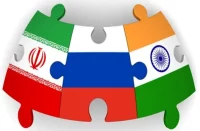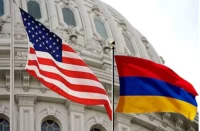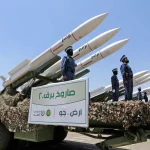Aurobinda MAHAPATRA (India)
The prime ministers of India and Pakistan met on the sidelines of the 16th SAARC (South Asian Association for Regional Cooperation) summit in the Bhutanese capital, Thimpu on 29 April 2010 with the main objective of resuming the composite dialogue process that was stalled after the Mumbai terror attack in 2008. This is the second time that the leaders met after a nine month gap after their meeting in the sidelines of NAM (Non-aligned Movement) summit in last July in Egypt. In the mean time in February this year, the foreign secretaries of the both the countries met in New Delhi, ostensibly to resume the dialogues process. All these meetings point to one direction, if not more, that the parties to the process are inching further closer towards realizing the importance of dialogue for peace and development in the region, not only of the Indian subcontinent but of the whole of South Asia. In fact most of the members of the regional group SAARC believe that it is the India-Pakistan tense relations that hold hostage the goals of the regional grouping, founded in the 1980s.
Hence, when the Indian foreign secretary while briefing the media aftermath of the meeting of the leaders stated the readiness of India ‘to resolve all outstanding issues through dialogue’, that could be called the right approach in the context of tense relations between the two South Asian neighbours. Despite the differences between two countries over the issues of boundary, Kashmir, Sir Creek, trade, etc. the fact remains that there is no military solution to the conflicts. One of the former prime ministers of India, A. B. Vajpayee had once remarked that one can change friends but not neighbours. The statement bears a loftier value in the particular context of India and Pakistan, which are arch rivals since their emergence. These two countries too possess nuclear weapons. Hence, despite acrimonious relationship between the two countries, which further got accentuated after the Mumbai attack, and despite some sections of the Indian establishment argued in favour of using weapons particularly against terrorist training centres in Pakistan soil aftermath of the attack, the ground situation shows that both the countries, particularly India, are mature enough not to use weapons to resolve bilateral contentious issues.
However, as the foreign secretary of India stated despite the realization that the dialogue is the only way forward, the factor of terrorism blocs the road towards dialogue. Especially after the Mumbai attack India has insisted that Pakistan must act against its chief architect Hafiz Saeed. Indian Prime Minister, Manmohan Singh conveyed to his Pakistan counterpart India’s ‘deep concern about Hafiz Saeed and the way he is allowed to roam free and engage in communication.’ India believes Pakistan is not doing enough to bring Saeed into book. Pakistan has argued that it has done enough to bring to justice the culprits of Mumbai attack. The Pakistan police has arrested Saeed twice, but he was later let off by the courts. Pakistan’s foreign ministry spokesperson argues that ‘how can you arrest someone on the basis of hearsay.’ Here comes the central point of the current standstill in bilateral relations. While India argues there is enough proof to arrest Saeed and initiate proceedings against him, Pakistan says the proofs are not sufficient enough to initiate legal proceedings against the chief of the Jamaat-ud-Dawa, banned by the United Nations after the Mumbai terror attack. In a rally in Pakistan on 5 February 2010 he called all people to get united for jehad against India. He also called the lone surviving terrorist of Mumbai attack, Ajmal Kasab a warrior (Abu Mujahid).
Despite all these differences, the positive outcome of the meeting of the leaders is that both the countries will further increase the frequency of meeting of the officials. Termed ‘changed climate,’ ‘positive development’, ‘restoring trust,’ ‘unexpected’ (regarding the positive outcome) the outcome of the meeting, undoubtedly the meeting and its optimistic outcome are no doubt indicative of the trend that both the countries would likely move closer towards the process of dialogue and deliberation for the resolution of contentious issues. The foreign ministers and foreign secretaries of the both the countries will likely meet soon to further the dialogue process. The crucial aspect of Indo-Pak relationship is that it always abhors status quo (in a negative sense), and favours a model of ever increasing dialogue and interactions. Any status quo or standstill in relationship always provides the fodder to the detractors like Hafiz Saeed to further bolster their agenda.
As an interim measure the revival of dialogue between the two countries is no doubt a welcome development. The increase in interactions between the civilian government of Pakistan and Indian government may likely weaken the constituency of radical groups and their patrons in Pakistan. There is an argument that the civilian government of Pakistan appears to be interested to develop friendly relations with Pakistan, but the army and intelligence agencies do not favour it. The dialogue between India and Pakistan will likely increase the legitimacy of the civilian government before the civil society and advocates of peace as the true representative of the people of Pakistan. However, some analysts would argue that unless the army develops a positive attitude towards the whole dialogue format and cooperate with it, it may be difficult to reach at any solution at the end of the dialogue. Because army controls the real levers of power, and the civilian government is the mask for business. India and Pakistan have to return back to this central issue as to how to reach a common format on various issues, and how to address the issues of concern, and how far the civilian government is effective in implementing its resolve in not allowing its soil to be used by terrorists (a point well articulated by the Pak foreign minister aftermath of the meeting of the leaders). However, despite all its shortcomings, the meeting of the leaders of India and Pakistan is certainly a positive development towards peace and development in South Asia.
Source: Strategic Culture Foundation














Comments